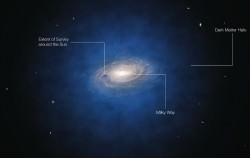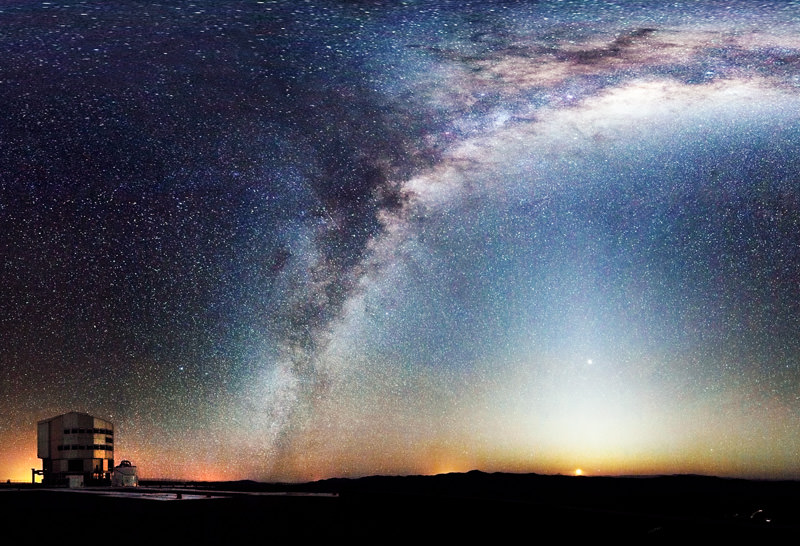[/caption]
Recent reports of dark matter’s demise may be greatly exaggerated, according to a new paper from researchers at the Institute for Advanced Study.
Astronomers with the European Southern Observatory announced in April a surprising lack of dark matter in the galaxy within the vicinity of our solar system.
The ESO team, led by Christian Moni Bidin of the Universidad de Concepción in Chile, mapped over 400 stars near our Sun, spanning a region approximately 13,000 light-years in radius. Their report identified a quantity of material that matched what could be directly observed: stars, gas, and dust… but no dark matter.
“Our calculations show that it should have shown up very clearly in our measurements,” Bidin had stated, “but it was just not there!”
But other scientists were not so sure about some assumptions the ESO team had based their calculations upon.
Researchers Jo Bovy and Scott Tremaine from the Institute for Advanced Study in Princeton, NJ, have submitted a paper claiming that the results reported by Moni Biden et al are “incorrect”, and based on an “invalid assumption” of the motions of stars within — and above — the plane of the galaxy.
(Read: Astronomers Witness a Web of Dark Matter)
“The main error is that they assume that the mean azimuthal (or rotational) velocity of their tracer population is independent of Galactocentric cylindrical radius at all heights,” Bovy and Tremaine state in their paper. “This assumption is not supported by the data, which instead imply only that the circular speed is independent of radius in the mid-plane.”
The researchers point out the stars within the local neighborhood move slower than the average velocity assumed by the ESO team, in a behavior called asymmetric drift. This lag varies with a cluster’s position within the galaxy, but, according to Bovy and Tremaine, “this variation cannot be measured for the sample [used by Moni Biden’s team] as the data do not span a large enough range.”
When the IAS researchers took Moni Biden’s observations but replaced the ESO team’s “invalid” assumptions on star movement within and above the galactic plane with their own “data-driven” ones, the dark matter reappeared.

“Our analysis shows that the locally measured density of dark matter is consistent with that extrapolated from halo models constrained at Galactocentric distances,” Bovy and Tremaine report.
As such, the dark matter that was thought to be there, is there. (According to the math, that is.)
And, the two researchers add, it’s not only there but it’s there in denser amounts than average — at least in the area around our Sun.
“The halo density at the Sun, which is the relevant quantity for direct dark matter detection experiments, is likely to be larger because of gravitational focusing by the disk,” Bovy and Tremaine note.
When they factored in their data-driven calculations on stellar velocities and the movement of the halo of non-baryonic material that is thought to envelop the Milky Way, they found that “the dark matter density in the mid-plane is enhanced… by about 20%.”
So rather than a “serious blow” to the existence of dark matter, the findings by Bovy and Tremaine — as well as Moni Biden and his team — may have not only found dark matter, but given us 20% more!
Now that’s a good value.
Read the IAS team’s full paper here.
(Tip of the non-baryonic hat to Christopher Savage, post-doctorate researcher at the Oskar Klein Centre for Cosmoparticle Physics at Stockholm University for the heads up on the paper.)

